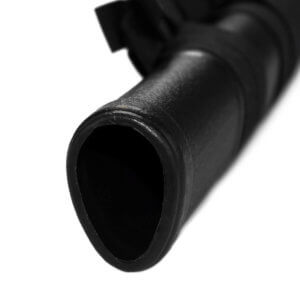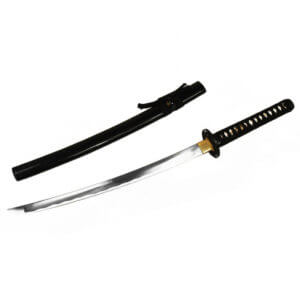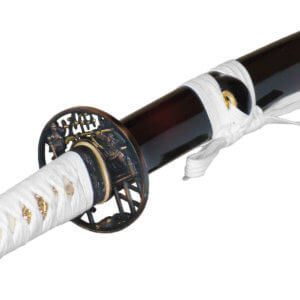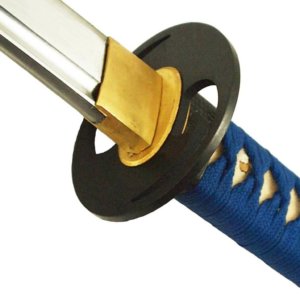Manufacture
Tamahagane has been produced in the same way in Japan for hundreds of years. It is made from iron sand in a Japanese racing kiln (tatara).
The first 10 minutes of this YouTube video show the extraction of the valuable metal:
Properties
The steel has a high carbon content and few unwanted components. It is very suitable for the manufacture of swords.
Processing into a samurai sword
The base material is selected by the swordsmith according to its carbon content for further processing, folded to improve the properties, such as here is described. A blade is gradually forged from the original pieces of steel.
Value
The production of tamahagane is time-consuming and requires a lot of basic material. It is therefore relatively valuable and expensive.
Comparison with modern industrial steel
There are no longer many applications for this steel, as there are simpler production methods for modern steel. However, it is still used in blade production in Japan out of a sense of tradition.
If you compare the pure steel properties, there is modern steel with similar properties that is cheaper. So for pure "performance" there are swords made from cheaper materials.
However, the traditional production of a samurai sword is based on the use of genuine tamahagane in combination with traditional forging techniques.
"Tamahagane" swords from mass production
For some years now, swords made from tamahagane that do not originate from Japan have been appearing in increasing numbers. The basic material for these swords does not come from Japan and the swords are from mass production. We strongly advise against buying such swords!
The high quality of a genuine Tamahagane sword is based on the high level of skill of the respective smith. And this prerequisite can only be met when creating a genuine Nihonto given. Certain craftsmanship skills are required to make a usable sword from the basic material. Of course, there are also sword smiths outside Japan who are able to do this. However, the work of these specialised smiths is almost as expensive as swords from Japan.
However, if Tamahagane is made in a mass production factory, the resulting sword can probably be bought for around 1000 euros. It is difficult to pin this down to concrete figures, of course inferior swords can also be offered at more expensive prices.
However, the blacksmith working there usually has neither the necessary skills nor the time to produce a good sword from tamahagane. That is the big difference to modern industrial steelThis is because it is relatively uncomplicated to process and can therefore be used to mass-produce functional swords. Tamahagane, on the other hand, is not suitable for standardised mass production.
Tamahagane swords from mass production are therefore generally not of good quality and are completely overpriced in comparison.
Different types of steel for katana and other samurai swords explained:






